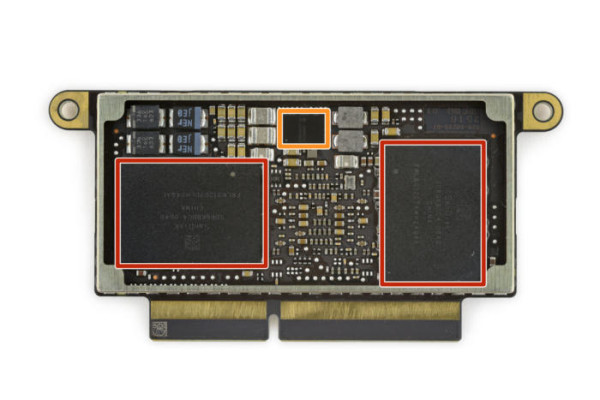The next MacBook Pro could sport Intel’s new 3D XPoint SSD

If Apple sticks with its typical 12-to 18-month refresh for the MacBook Pro line, Intel’s Optane solid state drives (SSDs) stand a good chance of being used in the next generation computers.
Why is that noteworthy? Because Optane SSDs are purported to have 1,000 times the performance of typical flash drives.
When Intel’s new storage technology does arrive, it will be compatiblewith the newest PCIe SSDs that use the NVM Express (NVMe) or Non-Volatile Memory Host Controller Interface Specification — a logical device interface for accessing flash storage via the PCIe bus.

“Apple has been a pioneer when it comes to PCIe/NVMe storage. They were the first PC company to broadly adopt it across its laptop portfolio while other companies today are still just using it in a very limited portion of their PC lineup,” Jeff Janukowicz, an IDC research vice president, said in an email reply to Computerworld. “By doing so, Apple has been able to deliver higher performance in terms of read/write speed and latency when compared to traditional SATA-based PC designs — thus, making the new MacBook pro more responsive and faster.”
The best consumer SATA III SSDs today become saturated at about 500MBps, according to Jim Handy, an analyst with Objective Analysis. In the future, other PC manufacturers will adopt SSDs using the PCIe/NVMe specification, but they aren’t expected to be broadly available until later in 2017, Janukowicz said.
Apple’s newest MacBook Pro already sports a hyperfast PCIe/NVMe SSD.

Apple’s specifications show the SSD in the 2016 13-in. MacBook Pro has sequential read/write speeds of 3.1Gbps and 2.1Gbps per second, respectively. The new 15-in. MacBook Pro ups the write speeds to 2.2Gbps, while the reads remain the same as the 13-in.
Computerworld tested a 13-in 2016 MacBook Pro and it pinned the needle for sequential reads at 2Gbps in a benchmark test using Blackmagic Disk Speed Test. The benchmark test showed a maximum write rate of just over 1.3Gbps.
The MacBook Pro’s SSD uses SanDisk flash memory, DRAM cache from Micron and Apple’s own 338S00199 SSD controller, according to a teardown of the machine by Fixit.
“This marks the first time we’ve seen Apple’s super-custom SSD controller in a removable PCIe SSD,” Fixit said in its review.
The flash drive nearly doubled its read performance over the previous MacBook Pro model, a feat that was likely the result of Apple’s proprietary controller. That controller likely uses technology from Anobit, an Israeli start-up whose expertise is signal processing technology for NAND flash devices. Apple acquired Anobit in 2011.
Before being acquired, Anobit showed off some downright barn-burning performance hikes on consumer-grade SSDs using its Memory Signal Processing (MSP) controllers.











